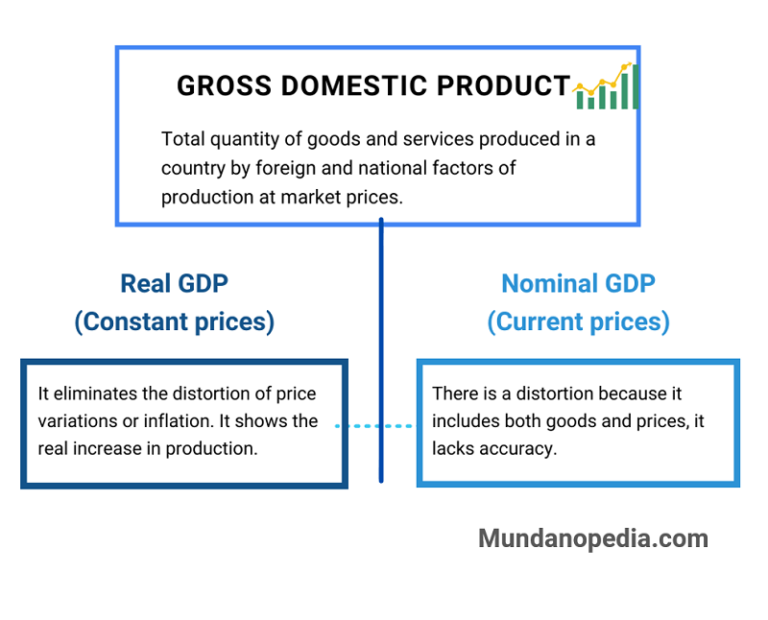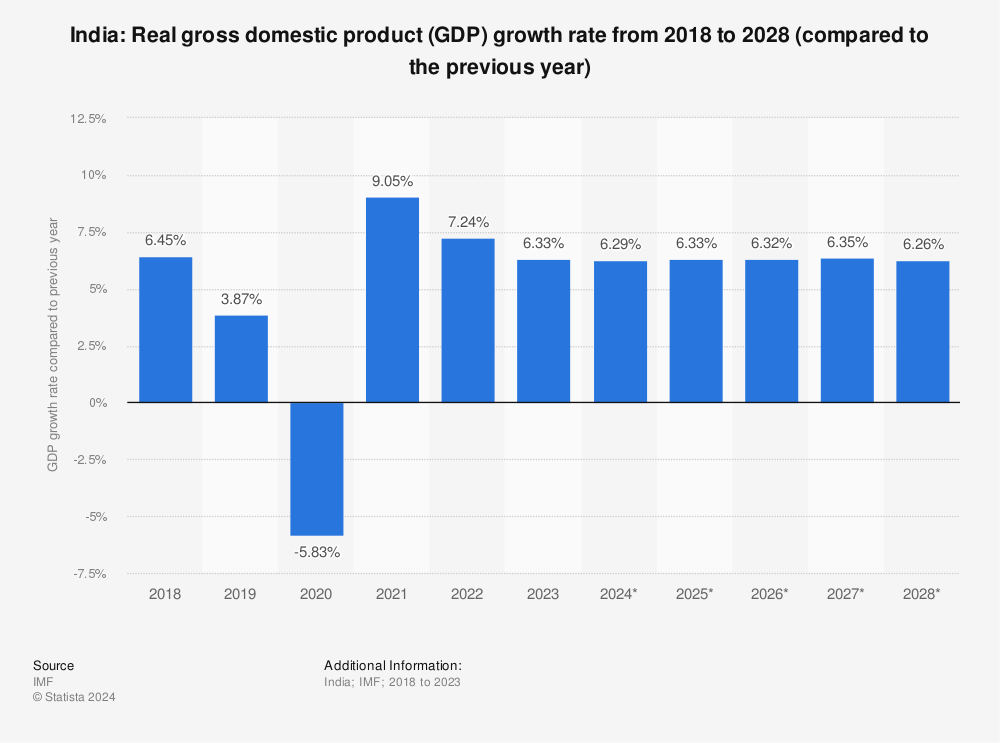When measuring the economic efficiency of a country, Gross Domestic Product, or GDP, is an important parameter. Countries use GDP as a parameter to evaluate the size of the economy and how an economy is performing. A growing GDP can positively reflect a country’s economic health and attract foreign investors.
But what is GDP, and how does the government of India calculate GDP in India? Read all about it in this blog –
You will Learn About:
What is GDP?

Gross Domestic Product (GDP) represents the aggregate market value of the finished goods and services produced within a country for a specified time period. Economists, Governments, and central banks across the globe use GDP as a metric to measure a country’s size, growth and economic health.
GDP can be calculated quarterly or annually.
Return on equity: Highlights
- GDP is the aggregate value of the finished goods and services produced in a country, typically during a year.
- The GDP is an indicator of the economic growth and development of the country.
- There are two types of GDP – real GDP and nominal GDP.
- The GDP, however, does not factor in non-monetary aspects, income distribution, quality of products and the adverse effect of production.
- GNP is different from GDP since it excludes the value of goods and services produced by foreign entities.
What is the current GDP of India?
The National Statistical Office (NSO) releases India’s GDP data.
According to the published reports, the GDP of India in 2022 is $3,385.09 billion, witnessing a growth of 7% from the last year. It is expected that India’s GDP is set to reach $3,598 billion by the end of 2023.
India’s GDP growth last year was 7%, making it one of the world’s best-performing economies. The country surpasses China in terms of GDP growth for the year 2022.
Types of Gross Domestic Product

There are two main types of Gross Domestic Product – nominal GDP and real GDP. Let’s understand what they are –
- What is nominal GDP?
Nominal GDP measures the value of goods and services produced in the country at their current market rates. Nominal GDP does not account for inflation.
Nominal GDP serves as a good measure to compare the GDP of different quarters within the same financial year where the rate of inflation more or less remains the same.
The formula to calculate the nominal GDP is –
Current year quantity output x Current market price
For example, if the current year quantity output is 1,000 and the current market price is $10, nominal GDP will be (1,000 x $10) = $10,000
- What is real GDP?
Real GDP measures the inflation-adjusted cost of goods and services produced in the country during a period. As it accounts for inflation, real GDP is considered a more accurate measure of the country’s total production and size. The value of real GDP is lower than nominal GDP as it takes the market price of the base year into consideration.
By comparing real GDPs across financial years, you can get a better idea of how the economy grew.
GDP Per Capita
The GDP per capita denotes the value of goods and services that can be attributed to one citizen. It can be calculated by dividing the GDP by the total population.
This value indicates the prosperity of a country’s citizens. The higher the GDP per capita, the more well-off the citizens are considered to be.
GDP Growth Rate

GDP growth rate or the economic growth rate measures the change in GDP (in percentage form) on an annual basis. It compares the GDP across financial years to create a trend analysis of how the GDP has been growing.
A high rate can be indicative of an aggressively growing economy. However, abnormal GDP growth can increase inflationary pressure, whereas extremely low growth rates can imply that the economy is not growing.
GDP Formula
There are three different methods to compute the GDP of a country. Though all three methods yield nearly the same result, the inputs that they use are different. These methods are as follows –
- The expenditure method
- The income method
- The output method
The GDP formula for each of these methods is also different, as explained below.
How to calculate GDP?

Read the aforementioned methods to understand how to calculate the GDP of a country.
The expenditure method
Under this method, the aggregate expenditure done by the different participants of the economy is summed up to find the GDP. The GDP formula under this method is as follows –
GDP = Household consumption + Government outlay + Investments + Net exports (exports minus imports)
The income method
Contrary to the expenditure method, the income method adds up the total income earned by all factors of production that participate in an economy. These factors include the following –
- Wages to labourers
- Rent on land
- Interest income
- Corporate profits, etc.
The output method
Under this method, the aggregate value of the goods and services produced in the economy is added to calculate the GDP. However, the cost of intermediate goods and services is deducted from the total calculation.
Limitations of GDP
While GDP is a useful metric, it does have some limitations, which may, in fact, can make it an incomplete or misleading indicator.
- GDP does not account for the quality of goods and services produced within a country. A country may produce high quantities of low goods and still report a high GDP. The overall consumption standards or quality of life can be low in such a case.
- How income is distributed is not accounted for by the GDP. The GDP may be high despite the concentration of wealth in the hands of a few, i.e., income inequality is not factored into GDP. In such cases, GDP can be an incomplete indicator of a country’s progress.
- GDP does not account for black markets and unreported labour.
- GDP does not factor in the negative impact on human life and the environment that might occur due to the production activities within the country. Moreover, non-market transactions and the sustainability of economic growth are not considered.
GDP vs GNP – What is the difference between GDP and GNP
Another concept that measures the economic development of a country is the Gross National Product or GNP.
GNP is different from GDP in the context that it calculates only the value of goods and services produced in the country by domestic individuals or corporations. The value of goods and services produced by foreign individuals or companies is excluded.
GNP is calculated as follows –
GNP = Consumption + Investment + Government expenses + Net exports + Net income earned by domestic residents from international investments – Net income earned by foreign residents from domestic investments
Conclusion
GDP is the total value of goods and services a country produces in a year. The GDP indicates how the economy is doing and is an important metric in economic analysis. The annual Indian budget also stresses the GDP performance to indicate how the forecasted budget fared against the actual performance of the economy. Understand the GDP meaning to compare different economies and understand their growth.
FAQs
Did you Like the Explanation?
Authored By:
I am a finance enthusiast who loves exploring the world of money through my lens. I’ve been dedicated to building systems that work and curating content that helps people learn.
As an insatiable reader and learner, I’ve spent the last two years exploring the world of finance. With my creative mind and curious spirit, I love making complex finance topics easy and fun for everyone to understand. Join me on my journey as we navigate the world of finance together!



